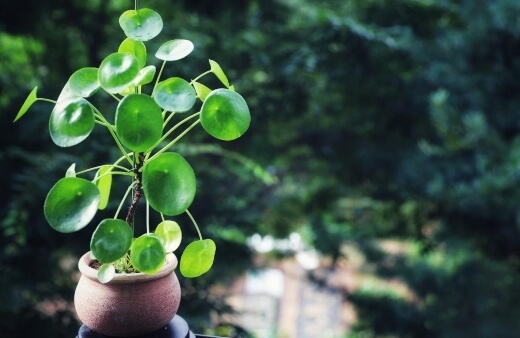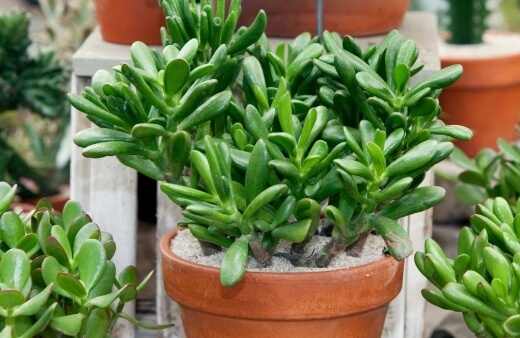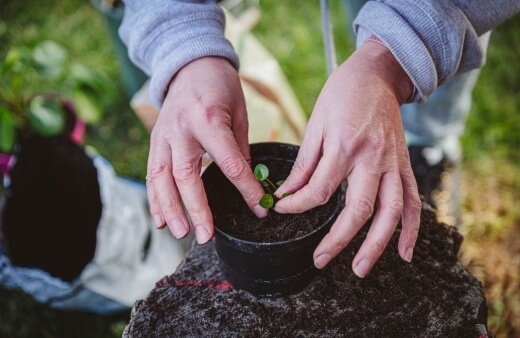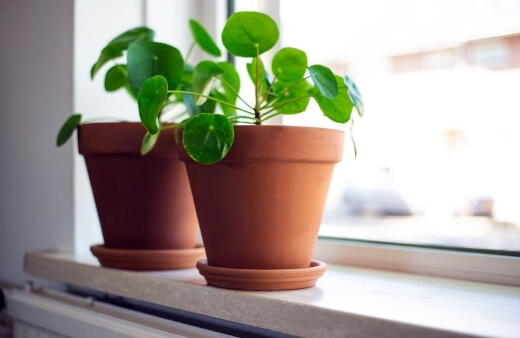If you’re looking for a green, indoor companion, there’s a wealth of reasons you should consider growing a Chinese money plant. Money plants are believed to benefit your indoor feng shui and are known to help purify indoor air too.
Gorgeous, green and relatively hassle-free, here is everything you need to know to cultivate, care for and grow money plants.
More...
What are Chinese Money Plants?

Chinese Money plants are a range of evergreen indoor plants believed to bring fortune and prosperity to those who grow them. Each variety is known to have abundant growth and are quite easy to multiply.
There are three different types of money plants you can choose to grow:
Chinese Money Plant

This is one of the most common money plants available. Chinese money plant, or Pilea peperomioides, originates from south China and produces succinct, coin-shaped leaves.
Jade Plant

Crassula ovata, more commonly known as Jade plant or money tree, is a smaller growing succulent plant. The jade plant originates from Southern Africa and has thick, plump leaves. This variety is, however, slightly toxic to pets.
Guiana Chestnut

Also known as a money tree, the Pachira aquatica or Guiana chestnut is a stunning tree with an intricately braided stem. Part of the Malvaceae family originates from South America.
Note: Guiana chestnut is different from Castanea sativa which are commonly known as chestnut trees.
Money plants are super easy to please and will thrive in most parts of your home, whether on tables, desks, shelves or in tall planters. They’re also known to be incredibly efficient air purifiers, making them suitable for offices and bedrooms.
In this article, we’ll be looking at how to grow and care for the money plant. Pilea peperomioides, is also known as the missionary plant, lefse plant, pancake plant, UFO plant or just for pilea for short.
How to Grow Chinese Money Plants

Money plants are perfect for indoors as they don’t require too much direct light. However, they enjoy the occasional warm rays of the sun, which will also help them photosynthesise and encourage new growth.
Ideally, you should grow your money plant near a south or west-facing window that receives a good amount of indirect, daily light. Jade plants require slightly more light than the rest.
When choosing a soil medium, these plants are overly picky. A free-draining, compost-rich potting mix is often the best choice.
Pilea peperomioides are sometimes known to produce blooms in colder regions. However, this is often infrequent.
Chinese Money Plant Propagation

Pilea peperomioides are most often reproduced by means of division. Plants growing in pots that have extra space will often produce off-shoots that can be cut away from the parent plant and replanted.
Simply:
- Remove your plant from the pot, gently shaking off any excess soil.
- Separate the off-shoots which rhizomes, either by hand or with a sharp, sanitised blade.
- Plant the off-shoots directly into a rich potting mix and water well for the first few days.
Chinese Money Plant Care Guide
In general, these plants don’t require too much attention when put in the right spot. You'll just need to keep an eye on watering, occasional fertilising and pruning if needed.
It is also advisable to rotate your pots every now and then, allowing all the leaves to experience the same amount of light. The large leaves also tend to gather dust, which can affect your money plant’s ability to photosynthesize.
As such, it’s a good idea to gently wipe down the leaves every so often.
Watering Money Plant
These plants suffice with occasional, weekly watering. The money tree needs a good deep soak. Be sure to allow plants to dry out before watering again, as this will avoid creating a breeding ground for disease.
Soaking plants in a basin or tub is advisable, as it will also help to remove dust from leaves. In winter, watering can be cut back to every 10 to 14 days.
Fertilising Chinese Money Plant
Fertiliser can be added to the soil during the growing months. A general-purpose fertiliser can be mixed into the soil into your watering solution. Avoid fertilising during the winter as it can lead to rot. (Here is our complete guide on choosing the right fertiliser for your plant's needs.)

Pruning Pilea peperomioides
Pruning is one of the least important care aspects of these plants. However, you can remove any damaged or yellow leaves when they appear.
Repotting Money Plants
Pilea peperomioides do well when repotted every year or so. This will help to replenish nutrients in the soil and ensure your soil is draining sufficiently. Giving the roots a little bit more room can also encourage more growth and larger leaves.
Potential Pilea peperomioides Problems
Drooping, Yellowing or Sudden Leaf Drop
The moment leaves begin to droop, change colour or drop suddenly; it can be a signifier of overwatering. Regulate watering more strictly and if the problem persists, consider repotting your plant into a better draining soil mixture.
Chinese Money Plant Curling Leaves
Curling leaves is a sign that your plant may be receiving too much light or too little water. Consider watering your plant more frequently and moving it out of any direct sunlight.
Where to Grow Money Plant
Before picking the right spot, it’s essential you know the needs of your money plant and pick a spot that will be suitable. You can pick somewhere in your office or workspace, in your bedroom or in a corner in your home.
Due to its fantastic ability to purify the air, it’s suitable for most areas in your home or office.

Get Ready for Good Fortune & Better Air with the Chinese Money Plants!
Growing a money plant it’s a perfect choice for your indoor space. Accustomed to lower light and mostly hassle-free, a Chinese money plant will not only improve your home’s appeal – it’ll hopefully bring you some financial success too.
Published on December 14, 2021 by Gary Clarke
Last Updated on February 21, 2024




